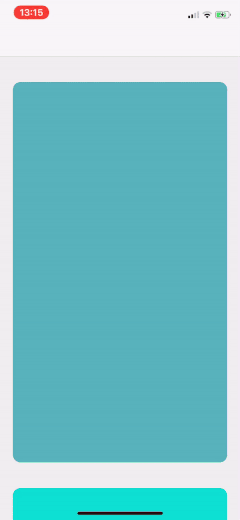- August 28, 2025
- Mins Read
Project goal and information
The goal of this project is to recreate the Discover UI in Shazam (which I think is a great, fun way to display content) in combination with a Tinder style of swiping cards to the left/right. The idea behind this is that in some cases, you don’t want to swipe away cards, but keep them available for later on. This implementation allows for that. And it’s a fun way to interact with content.
It’s built with a UICollectionView and a custom flowLayout.
Requirements
- iOS 9.0+
- Swift 5
Installation
CocoaPods
To install with CocoaPods, simply add the following line to your Podfile:
pod ‘VerticalCardSwiper’
Carthage
To install with Carthage, simply add the following line to your Podfile:
github “JoniVR/VerticalCardSwiper”
Example
To try out VerticalCardSwiper
pod try VerticalCardSwiper
or open the project and run the Example.
Usage
VerticalCardSwiper behaves a lot like a standard UICollectionView. To use it inside your UIViewController:
import VerticalCardSwiper
class ExampleViewController: UIViewController, VerticalCardSwiperDatasource {
private var cardSwiper: VerticalCardSwiper!
override func viewDidLoad() {
super.viewDidLoad()
cardSwiper = VerticalCardSwiper(frame: self.view.bounds)
view.addSubview(cardSwiper)
cardSwiper.datasource = self
// register cardcell for storyboard use
cardSwiper.register(nib: UINib(nibName: “ExampleCell”, bundle: nil), forCellWithReuseIdentifier: “ExampleCell”)
}
func cardForItemAt(verticalCardSwiperView: VerticalCardSwiperView, cardForItemAt index: Int) -> CardCell {
if let cardCell = verticalCardSwiperView.dequeueReusableCell(withReuseIdentifier: “ExampleCell”, for: index) as? ExampleCardCell {
return cardCell
}
return CardCell()
}
func numberOfCards(verticalCardSwiperView: VerticalCardSwiperView) -> Int {
return 100
}
}
Properties
/// Indicates if side swiping on cards is enabled. Set to false if you don’t want side swiping. Default is `true`.
@IBInspectable public var isSideSwipingEnabled: Bool = true
/// Allows you to enable/disable the stacking effect. Default is `true` (enabled).
@IBInspectable public var isStackingEnabled: Bool = true
/// The transform animation that is shown on the top card when scrolling through the cards. Default is 0.05.
@IBInspectable public var firstItemTransform: CGFloat = 0.05
/// The inset (spacing) at the top for the cards. Default is 40.
@IBInspectable public var topInset: CGFloat = 40
/// The inset (spacing) at each side of the cards. Default is 20.
@IBInspectable public var sideInset: CGFloat = 20
/// Sets how much of the next card should be visible. Default is 50.
@IBInspectable public var visibleNextCardHeight: CGFloat = 50
/// Vertical spacing between the focussed card and the bottom (next) card. Default is 40.
@IBInspectable public var cardSpacing: CGFloat = 40
/// Allows you to set the view to Stack at the Top or at the Bottom. Default is true.
@IBInspectable public var isStackOnBottom: Bool = true
/// Sets how many cards of the stack are visible in the background
@IBInspectable public var stackedCardsCount: Int = 1
/**
Returns an array of indexes (as Int) that are currently visible in the `VerticalCardSwiperView`.
This includes cards that are stacked (behind the focussed card).
*/
public var indexesForVisibleCards: [Int]
Other
Just like with a regular UICollectionView, you can reload the data by calling
cardSwiper.reloadData()
Get the current focussed card index
cardSwiper.focussedCardIndex
Scroll to a specific card by calling
cardSwiper.scrollToCard(at: Int, animated: Bool) -> Bool
Get a card at specified index
cardSwiper.cardForItem(at: Int) -> CardCell?
Swipe a card away programatically
cardSwiper.swipeCardAwayProgrammatically(at: Int, to: SwipeDirection, withDuration: TimeInterval = 0.3) -> Bool
Moving/Deleting/Inserting cards at runtime
Make sure to update your datasource first, otherwise an error will occur.
cardSwiper.moveCard(at: Int, to: Int)
cardSwiper.deleteCards(at: [Int])
cardSwiper.insertCards(at: [Int])
Delegation
To handle swipe gestures, implement the VerticalCardSwiperDelegate.
class ViewController: UIViewController, VerticalCardSwiperDelegate {
override func viewDidLoad() {
super.viewDidLoad()
cardSwiper.delegate = self
}
func willSwipeCardAway(card: CardCell, index: Int, swipeDirection: SwipeDirection) {
// called right before the card animates off the screen (optional).
}
func didSwipeCardAway(card: CardCell, index: Int, swipeDirection: SwipeDirection) {
// handle swipe gestures (optional).
}
func didCancelSwipe(card: CardCell, index: Int) {
// Called when a card swipe is cancelled (when the threshold wasn’t reached)
}
func sizeForItem(verticalCardSwiperView: VerticalCardSwiperView, index: Int) -> CGSize {
// Allows you to return custom card sizes (optional).
return CGSize(width: verticalCardSwiperView.frame.width * 0.75, height: verticalCardSwiperView.frame.height * 0.75)
}
func didScroll(verticalCardSwiperView: VerticalCardSwiperView) {
// Tells the delegate when the user scrolls through the cards (optional).
}
func didEndScroll(verticalCardSwiperView: VerticalCardSwiperView) {
// Tells the delegate when scrolling through the cards came to an end (optional).
}
func didDragCard(card: CardCell, index: Int, swipeDirection: SwipeDirection) {
// Called when the user starts dragging a card to the side (optional).
}
func didTapCard(verticalCardSwiperView: VerticalCardSwiperView, index: Int) {
// Tells the delegate when the user taps a card (optional).
}
func didHoldCard(verticalCardSwiperView: VerticalCardSwiperView, index: Int, state: UIGestureRecognizer.State) {
// Tells the delegate when the user holds a card (optional).
}
}
Customization
Subclass the CardCell to customize the cards.
class ExampleCardCell: CardCell {
}
Key Features
- Shazam Discover UI with paging
- Tinder-style swiping
- Option to disable side swiping
- Set custom number of stacked cards
- Code documentation in README.md file
- Cocoapods support
- Carthage support
- SPM support
- Diff support
GitHub
- August 27, 2025
- SwiftUI
This package provides you with an easy way to show tooltips over any SwiftUI view, since Apple does not provide ...
- August 27, 2025
- SwiftUI
- Uncategorized
SimpleToast is a simple, lightweight, flexible and easy to use library to show toasts / popup notifications inside iOS or ...
- August 27, 2025
- SwiftUI
Create Toast Views with Minimal Effort in SwiftUI Using SSToastMessage. SSToastMessage enables you to effortlessly add toast notifications, alerts, and ...




